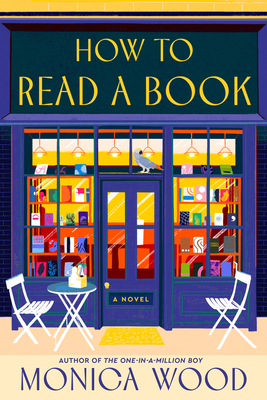How to Read a Book Book Summary
TL;DR
How to Read a Book by Monica Wood is a poignant novel exploring themes of second chances, guilt, and the transformative power of stories through the intertwined lives of an ex-convict, a retired teacher, and a grieving husband.
What is How to Read a Book about
Monica Wood's How to Read a Book is a deeply moving narrative that revolves around the lives of three distinct characters brought together by fate and their shared love for literature. Violet Powell, a young woman freshly released from prison, grapples with her past actions that led to a tragic accident. Harriet Larson, a retired English teacher running a prison book club, faces the challenge of an empty nest and the emotional void it brings. Frank Daigle, the bereaved husband of the victim, struggles with his marriage and unresolved grief. Their unexpected encounter at a Portland bookstore sets the stage for profound transformations as they confront their pasts, share their stories, and learn the significance of kindness and connection. The book emphasizes the power of storytelling to evoke healing and redemption.
How to Read a Book 8 Key Takeaways
Violet's Release from Prison
Violet Powell, a 22-year-old woman, is released after serving time for a drunk-driving crash that claimed a life. This pivotal moment marks her quest for redemption and understanding.
Harriet's Empty Nest
Harriet Larson, a retired teacher, faces an emotional void as her children leave home. Her role in the prison book club becomes a lifeline, connecting her to those still searching for hope.
Frank's Grief
Frank Daigle is haunted by the loss of his wife, grappling with unresolved feelings towards Violet and the burden of his own guilt. His journey reflects the struggle for forgiveness.
The Meeting at the Bookstore
The characters converge at a bookstore, each with their own motives, leading to unexpected interactions that challenge their perspectives and open paths for healing.
Shared Stories and Growth
As the characters share their experiences and engage in literary discussions, they begin to confront their pasts, fostering a sense of community and understanding.
Transformation through Literature
Books become a catalyst for change, allowing each character to reflect on their life choices and relationships, ultimately leading to personal growth and acceptance.
Forgiveness and Second Chances
The narrative culminates in themes of forgiveness and the possibility of second chances, underscoring the idea that one's past does not define their future.
A New Beginning
By the end of the story, each character embarks on a new chapter in their lives, having learned to embrace their imperfections and the power of compassion.
How to Read a Book Videos
How to Read (and Understand) Hard Books - YouTube
Top How to Read a Book Quotes
- Our reasons meet us in the morning and whisper to us at night.
- Books have the power to change our lives, if only we let them.
- It’s never too late to write a new chapter in your story.
Who should read How to Read a Book?
How to Read a Book appeals to readers who appreciate character-driven narratives and themes of redemption. Those who enjoy stories about the human condition and the healing power of literature will find inspiration and comfort in Wood's beautifully crafted prose.
How to Read a Book Best Reviews
- Monica Wood's How to Read a Book is a tender exploration of the human experience, showcasing the beauty of unexpected friendships and the healing nature of storytelling. - Publisher's Weekly
- An emotionally charged narrative that weaves together themes of loss, redemption, and the transformative power of literature. Wood's prose is both heartfelt and insightful. - BookPage
- How to Read a Book captures the essence of resilience and hope. The characters’ journeys resonate deeply, reminding us that it’s never too late to change our story. - Kirkus Reviews
People also liked these summaries
How to Read a Book FAQs
What are the main themes of How to Read a Book?
The main themes include second chances, the transformative power of storytelling, forgiveness, and the connections formed through shared experiences.
Is How to Read a Book suitable for young adults?
Yes, the novel's themes of redemption and personal growth resonate with young adult readers, making it an accessible and thought-provoking read.
What is the significance of the bookstore setting?
The bookstore serves as a pivotal backdrop where characters from different walks of life converge, highlighting the role of literature in connecting people and fostering relationships.


